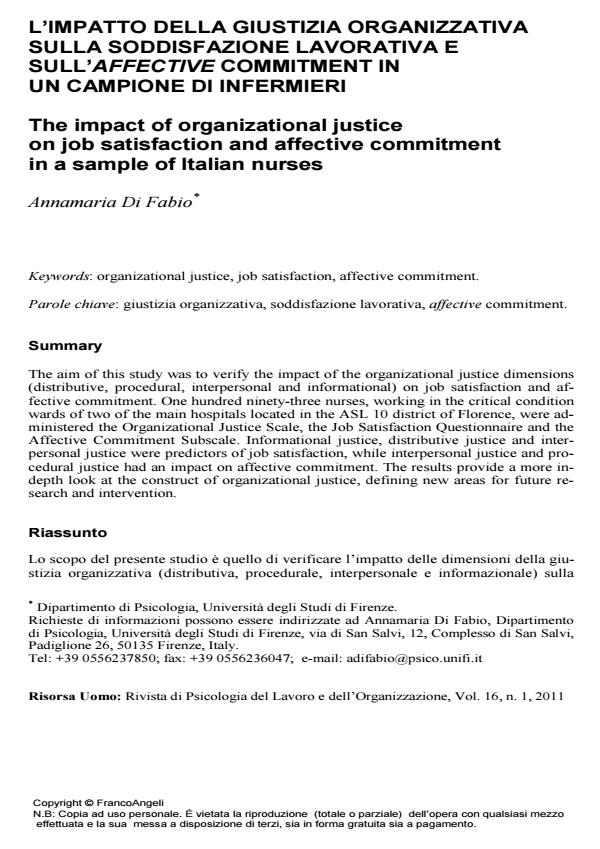The impact of organizational justice on job satisfaction and affective commitment in a sample of Italian nurses
Journal title RISORSA UOMO
Author/s Annamaria Di Fabio
Publishing Year 2011 Issue 2011/1
Language Italian Pages 14 P. 83-96 File size 282 KB
DOI 10.3280/RU2011-001007
DOI is like a bar code for intellectual property: to have more infomation
click here
Below, you can see the article first page
If you want to buy this article in PDF format, you can do it, following the instructions to buy download credits

FrancoAngeli is member of Publishers International Linking Association, Inc (PILA), a not-for-profit association which run the CrossRef service enabling links to and from online scholarly content.
The aim of this study was to verify the impact of the organizational justice dimensions (distributive, procedural, interpersonal and informational) on job satisfaction and affective commitment. One hundred ninety-three nurses, working in the critical condition wards of two of the main hospitals located in the ASL 10 district of Florence, were administered the Organizational Justice Scale, the Job Satisfaction Questionnaire and the Affective Commitment Subscale. Informational justice, distributive justice and interpersonal justice were predictors of job satisfaction, while interpersonal justice and procedural justice had an impact on affective commitment. The results provide a more indepth look at the construct of organizational justice, defining new areas for future research and intervention.
Keywords: Organizational justice, job satisfaction, affective commitment
- Organizational Justice: Personality Traits or Emotional Intelligence? An Empirical Study in an Italian Hospital Context Annamaria Di Fabio, Letizia Palazzeschi, in Journal of Employment Counseling /2012 pp.31
DOI: 10.1002/j.2161-1920.2012.00004.x
Annamaria Di Fabio, L’impatto della giustizia organizzativa sulla soddisfazione lavorativa e sull’<i>affective</i> commitment in un campione di infermieri in "RISORSA UOMO " 1/2011, pp 83-96, DOI: 10.3280/RU2011-001007